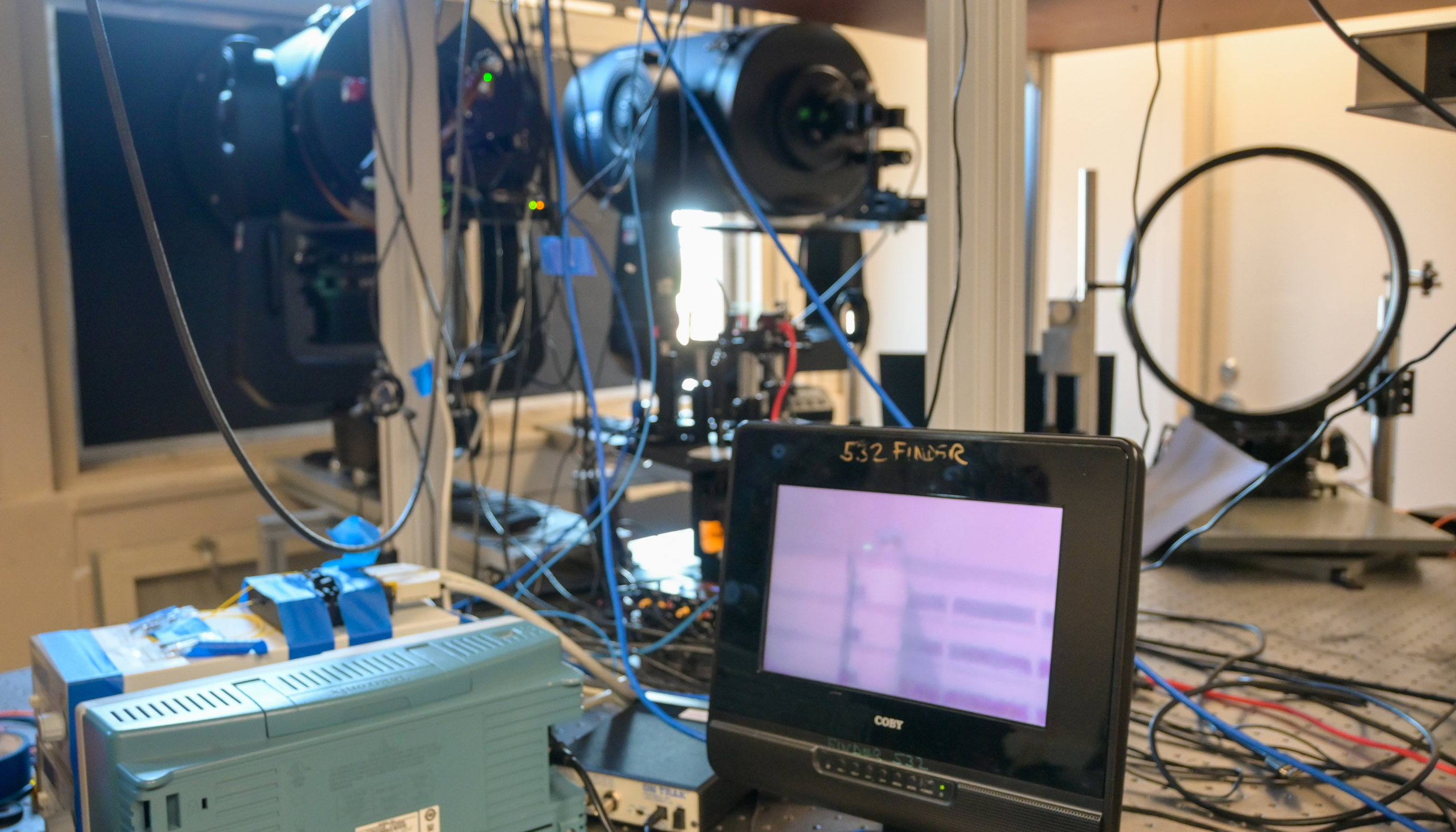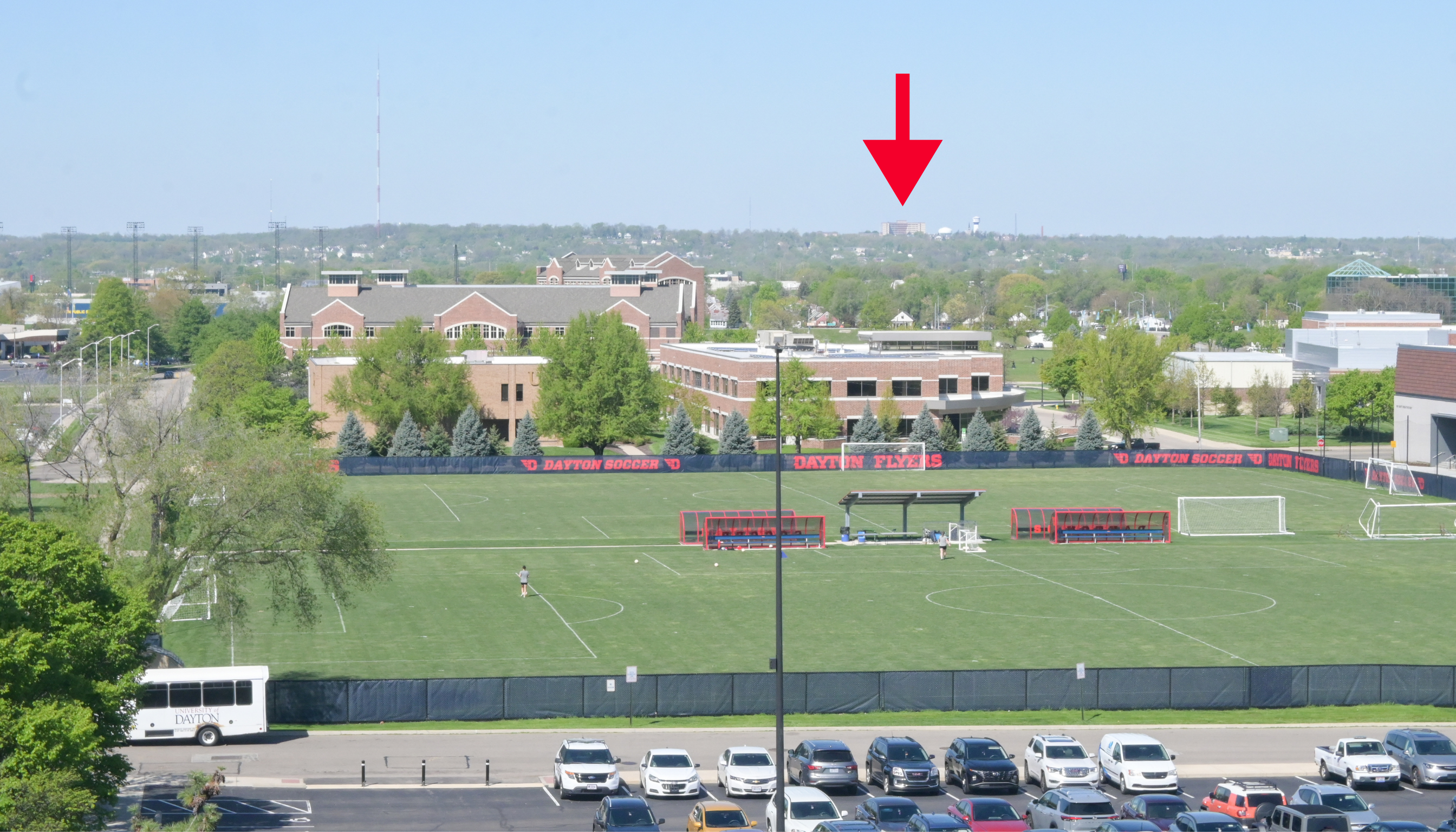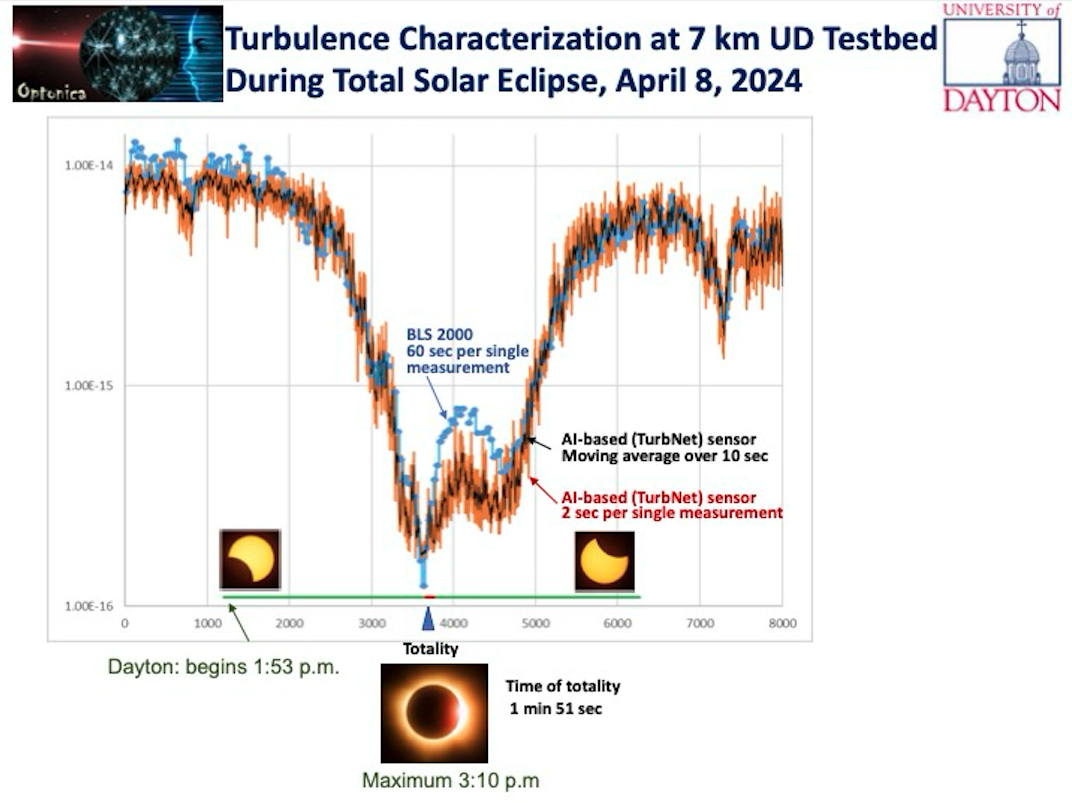Dayton Engineer

UD Researchers Find Unique Results in Testing Turbulence Strength During Total Solar Eclipse
Researchers in the UD School of Engineering’s Department of Electro-Optics and Photonics (EOP) recently investigated changes in the air’s turbulence during the April 8th total solar eclipse in Dayton.
Led by professor and Intelligent Optics Laboratory director Dr. Mikhail Vorontsov, researchers observed unexpected atmospheric effects in a set of measurements that are difficult to make, given a small portion of the U.S. with total solar eclipse, lack of currently available instruments and an appropriately equipped testing site.
Like how water ripples as it flows over rocks, so does the air as it emanates over the Earth’s surface. Although it’s invisible to our eyes, the air “ripples” are the turbulence we feel in an airplane. Atmospheric turbulence also distorts the light that travels through the atmosphere. This light distortion is most noticeable when observing stars, causing them to twinkle.
During the eclipse, as the Moon blocks the sunlight, the sudden decrease in solar radiation can cause changes in temperature, atmospheric pressure and wind patterns, which can affect the strength of turbulence. Because the change in turbulence only lasts for as long as the eclipse, a turbulence strength sensing at high measurement rate is required.
A novel AI-based sensor, TurbNet, for real-time atmospheric turbulence strength measurements was developed recently by researchers at the UD EOP Intelligent Optics Laboratory and Optonica LLC (a small business in Dayton area). The TurbNet sensor was used during the solar eclipse totality of less than three minutes to monitor the change in turbulence more than 30 times faster than with commercially available instruments.
The sensor was installed in EOP’s unique 7 kilometer atmospheric test range, which runs from the Fitz Hall lab window to the instrumentation installation located on the roof of the VA hospital in downtown Dayton.
Researchers found that turbulence strength significantly dropped during totality then slightly rose and dropped again as the moon moved out of the sun’s view and then finally significantly increased to a normal level at the solar eclipse end. This mirrored turbulence strength variations that we see during sunrise and sunset, just in a much shorter length of time.
“The high-resolution sensing data obtained during the total solar eclipse is unique and will help to better understand the complex dynamics of processes occurring in the Earth’s atmosphere,” said Vorontsov.
The team is eager to study the obtained results more and share their findings with other researchers in the future. They have already begun comparing results with researchers at the University of Albany.


